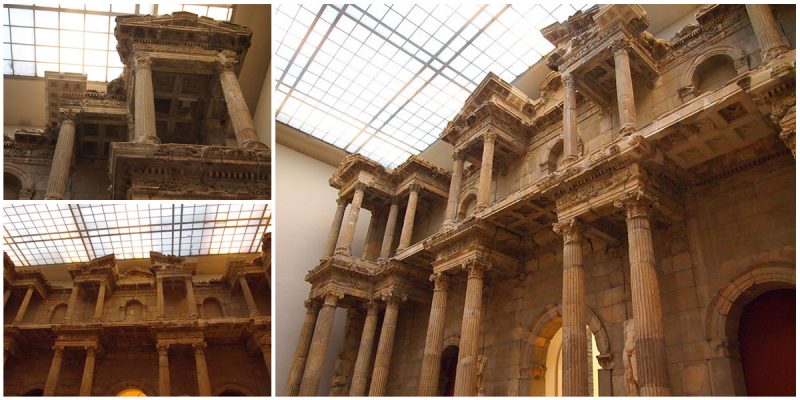The Market Gate of Miletus is a massive marble structure built in the 2nd century AD in Miletus, an ancient Greek city known as a wealthy trading port, located in Turkey’s Aydin province, a few kilometers north of the town of Balat.
While the original construction happened during Roman times (most likely during the reign of the Roman Emperor Hadrian in about 120 to 130 AD.), the gate was later, under Emperor Justinian the Great, incorporated into the city wall.
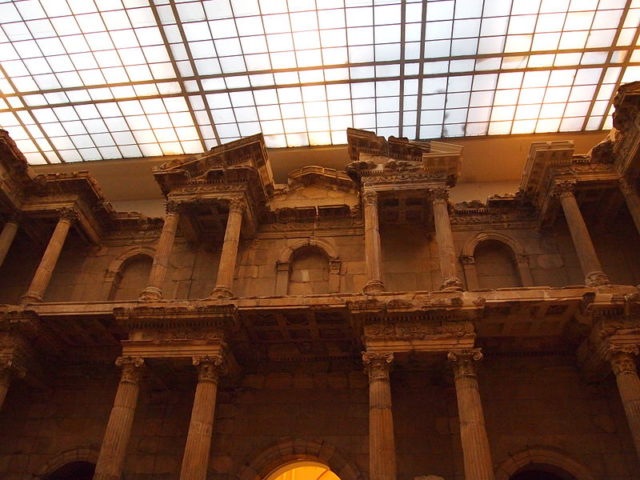
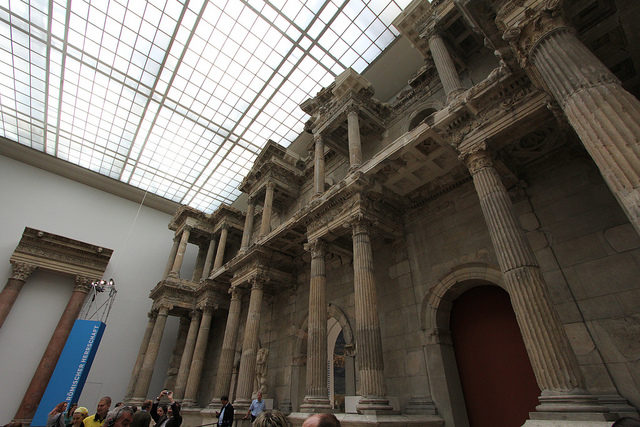
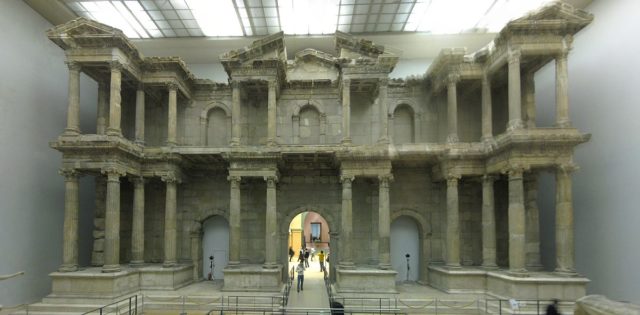
Between the first and second floor, it is decorated with friezes with the images of bulls and flowers. The structure’s protruding pediments are supported by Corinthian and composite columns.
In front of the market gate, also dating to the second century AD, there is an incredible mosaic floor depicting Orpheus, a prominent figure in Greek religion and mythology.
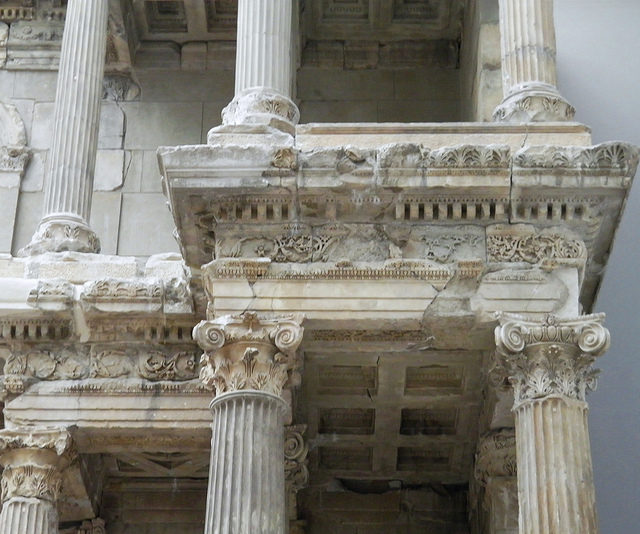
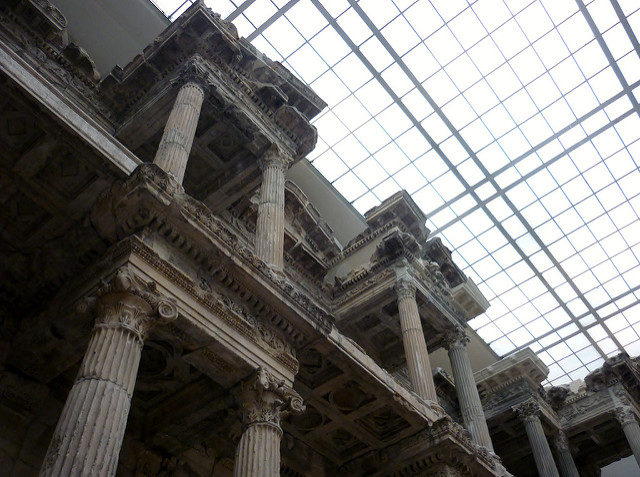
The Gate was destroyed with most of the structures in the town during an earthquake in the 10th or 11th century, and the ruins were not discovered until the beginning of the 20th century by a German archaeologist, Theodor Wiegand. In 1903, the Market Gate of Miletus was excavated, and from 1907 to 1908, the fragments of the gate were transported to Berlin, where it was reconstructed between 1925 and 1929 and put on display in the Pergamon Museum.
However, the fragments did not constitute the entirety of the gate, and additional materials like brick, cement, and steel had to be used in the reconstruction.
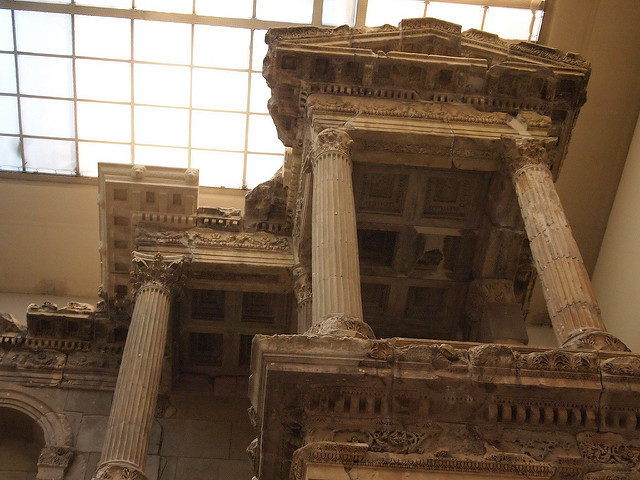
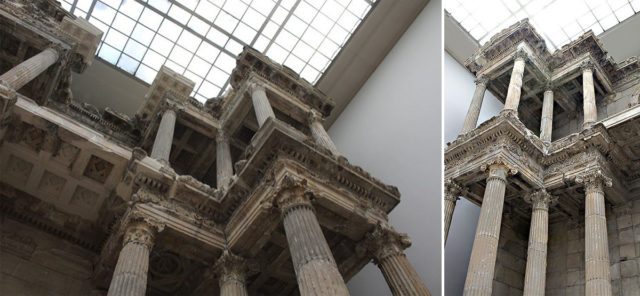
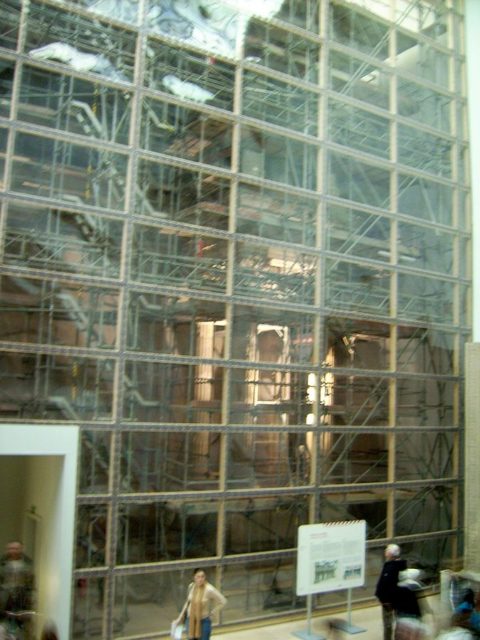
After its excavation and reconstruction in Berlin, the gate also suffered significant damage from aerial bombardment in World War II and underwent restoration in the 1950s. Today visitors can see about 60% original stonework from Miletus in the Pergamon Museum.
The two giant statues of an emperor in a general’s armor and nude figure of a hero holding a horn of plenty, which unfortunately survived only in fragments, were mounted in the gate for the first time in 2009.
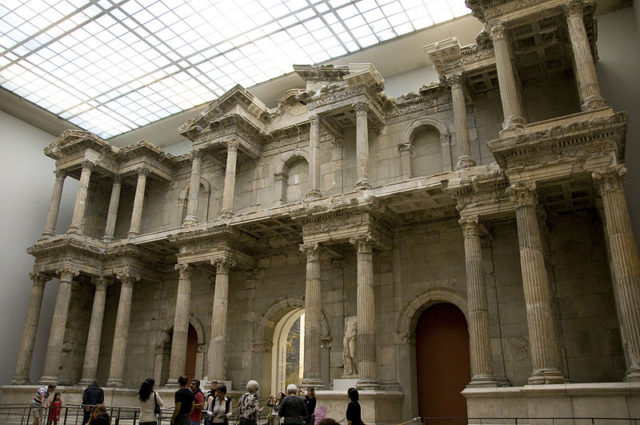
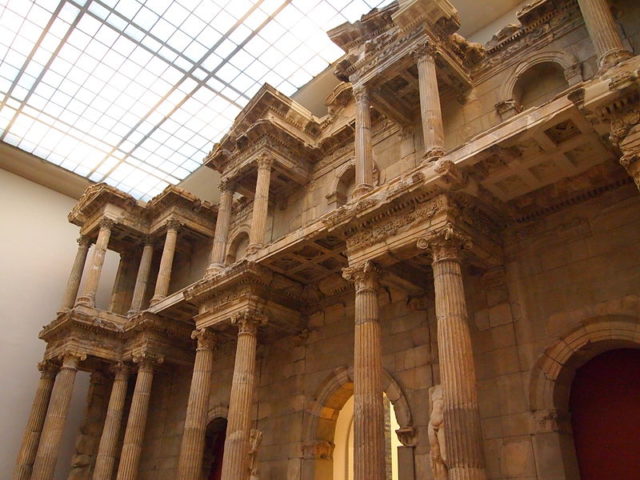
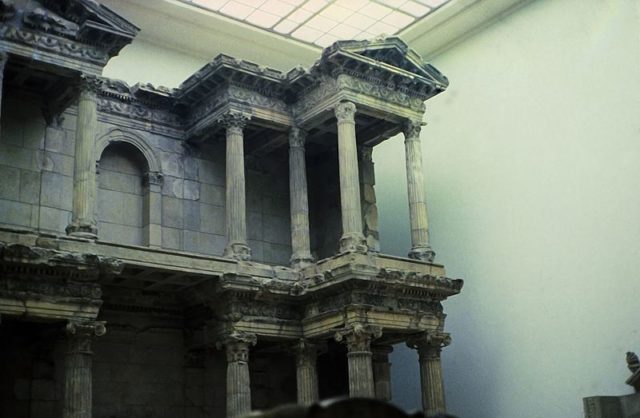
The second and final part of the restoration will be taken on in the course of the second construction phase of the overhaul of the museum building starting in 2019. It’s size and beauty make it one on the highlights of the museum.
Beside the Miletus Market Gate, the Pergamum Museum in Berlin is the home to other two outstanding architectural remains from the ancient world: the Zeus Altar from Pergamum and the Ishtar Gate from Babylon.
